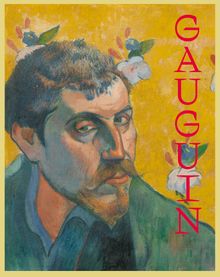| |||||||||||||||||||||||||
ARTIST MONOGRAPHS
|
|
in stock $55.00 Free Shipping UPS GROUND IN THE CONTINENTAL U.S. |
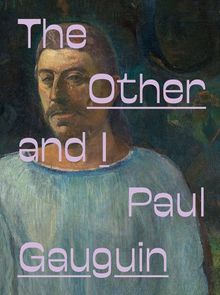 Paul Gauguin: The Other and I
Paul Gauguin: The Other and I
Published by Museu de Arte de São Paulo Assis Chateaubriand/KMEC Books.
Edited by Adriano Pedrosa, Fernando Oliva, Laura Cosendey. Text by Abigail Solomon-Godeau, Caroline Vercoe, Fernando Oliva, Heather Waldroup, Irina Stotland, Laura Cosendey, Linda Goddard, Ngahuia Te Awekotuku, Norma Broude, Stephen F. Eisenman, Tamar Garb.
This book accompanies the first exhibition to investigate Paul Gauguin’s (1848–1903) relationship with the question of alterity and the exoticizing of otherness in his paintings. Adopting an engagingly critical tone, Paul Gauguin: The Other and I deals with central questions within the celebrated Post-Impressionist’s oeuvre, focusing on both his self-portraits and his works produced in Tahiti.
Alongside reproductions of relevant works, the book also features essays that examine the tensions between Gauguin’s biography and the image that the artist assiduously created of himself, as well as the way in which his oeuvre reinforced an imaginary about otherness, addressing crucial and current issues such as the notion of primitivism, the "exotic" and the "tropics," and cultural appropriation, as well as matters related to the erotization of the female body, sexuality and androgyny.
PUBLISHER
Museu de Arte de São Paulo Assis Chateaubriand/KMEC Books
BOOK FORMAT
Hardcover, 8 x 10.75 in. / 272 pgs / 151 color.
PUBLISHING STATUS
Pub Date 10/3/2023
Active
DISTRIBUTION
D.A.P. Exclusive
Catalog: FALL 2023 p. 98
PRODUCT DETAILS
ISBN 9786557770351 TRADE
List Price: $55.00 CAD $79.00 GBP £48.00
AVAILABILITY
In stock
in stock $55.00 Free Shipping UPS GROUND IN THE CONTINENTAL U.S. |
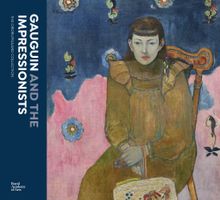 Gauguin and the Impressionists
Gauguin and the Impressionists
The Ordrupgaard Collection
Published by Royal Academy of Arts.
Text by Anna Ferrari, Anne-Birgitte Fonsmark.
Drawn from the remarkable Ordrupgaard Collection of the Danish insurance broker and art lover Wilhelm Hansen, the masterpieces of 19th-century French painting in this volume represent the very best of French impressionism.
Joining an already impressive collection of Scandinavian art, one of the first French paintings Hansen acquired was Woman with a Fan, Portrait of Madame Marie Hubbard (1874) by Berthe Morisot. This gently ironic work set the tone for his perceptive and adventurous collecting style. A burst of acquisitions from 1916 to 1918, during which he took advice from the influential critic Théodore Duret, saw his collection grow to include works by Cézanne, Courbet, Gauguin, Manet, Matisse, Monet, Renoir and Sisley.
With stunning reproductions of 60 works, the authors explore the history of the collection and provide detailed analysis of the works themselves.
PUBLISHER
Royal Academy of Arts
BOOK FORMAT
Hardcover, 9.25 x 9.75 in. / 144 pgs / 100 color.
PUBLISHING STATUS
Pub Date 6/2/2020
Active
DISTRIBUTION
D.A.P. Exclusive
Catalog: SPRING 2020 p. 59
PRODUCT DETAILS
ISBN 9781912520503 TRADE
List Price: $25.00 CAD $35.00
AVAILABILITY
Out of stock
STATUS: Out of stock Temporarily out of stock pending additional inventory. |
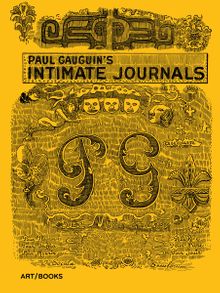 Paul Gauguin's Intimate Journals
Paul Gauguin's Intimate Journals
Published by Art / Books.
Preface by Émile Gauguin. Translated by Van Wyck Brooks.
Unappreciated in his own lifetime, Paul Gauguin (1848–1903) is now recognized as one of the giants of French postimpressionism and a pioneer of early modernism. A rebel in both art and life, he rejected his bourgeois upbringing and comfortable stockbroker's job to devote his life to painting. Eventually, dismayed by the "hypocrisy of civilization" and in search of a primitive idyll, he left Paris and took up residence in the South Seas, first in Tahiti and, later, in the Marquesas Islands. He would never return to Europe. In the final months of his life, he wrote this witty, revealing autobiographical memoir with the request that it be published upon his death. It first appeared in the original French in 1918, and was translated into English three years later. As his son Émile wrote in the preface, "These journals are an illuminating self-portrait of a unique personality.… They bring sharply into focus for me his goodness, his humor, his insurgent spirit, his clarity of vision, his inordinate hatred of hypocrisy and sham."
Wide-ranging and elliptical, these candid reflections reveal Gauguin's thoughts about many subjects, including frank views on his fellow artists back in Paris, his turbulent relationship with Van Gogh and the charms of Polynesian women, while providing glimpses into his often far-from-idyllic life in the islands. This beautiful facsimile reproduces the first American translation of the journals, a rare limited edition privately published in New York in 1921 for a select group of subscribers. With full-page sketches by the artist, these entertaining and enlightening musings give us a unique insight into Gauguin the man and the artist.
PUBLISHER
Art / Books
BOOK FORMAT
Hardcover, 7.5 x 10 in. / 192 pgs / 27 bw.
PUBLISHING STATUS
Pub Date 6/18/2019
Active
DISTRIBUTION
D.A.P. Exclusive
Catalog: SPRING 2019 p. 47
PRODUCT DETAILS
ISBN 9781908970459 TRADE
List Price: $30.00 CAD $45.00
AVAILABILITY
In stock
in stock $30.00 Free Shipping UPS GROUND IN THE CONTINENTAL U.S. |
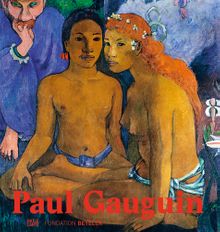 Paul Gauguin
Paul Gauguin
Published by Hatje Cantz.
Text by Raphael Bouvier, Lukas Gloor, Sam Keller, Martin Schwander, Alastair Wright.
Paul Gauguin (1848–1903) was born in Paris and made his first extended voyage in 1866, embarking on a round-the-world journey. He began painting and drawing in 1871, quickly becoming acquainted with the Impressionist movement and attending a private art school. He participated in the fourth Impressionist exhibition (1879), soon after which he met Cézanne, while on holiday in Pontoise. He moved to Tahiti in 1891, where he made some of his best-known works, and died there in 1903.
PUBLISHER
Hatje Cantz
BOOK FORMAT
Hardcover, 11 x 12.5 in. / 216 pgs / 145 color.
PUBLISHING STATUS
Pub Date 6/23/2015
Out of stock indefinitely
DISTRIBUTION
D.A.P. Exclusive
Catalog: SPRING 2015 p. 71
PRODUCT DETAILS
ISBN 9783775739597 TRADE
List Price: $95.00 CAD $127.50
AVAILABILITY
Not available
STATUS: Out of stock indefinitely. |
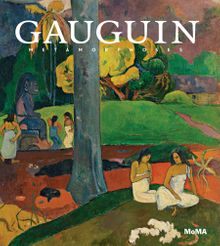 Gauguin: Metamorphoses
Gauguin: Metamorphoses
Published by The Museum of Modern Art, New York.
Edited by Starr Figura. Text by Elizabeth Childs, Hal Foster, Erika Mosier, Lotte Johnson.
Painter, printmaker, sculptor and ceramicist, Paul Gauguin (1848–1903) left his job as a stockbroker in Paris for a peripatetic life traveling to Martinique, Brittany, Arles, Tahiti and, finally, the Marquesas Islands. After exhibiting with the Impressionists in Paris and acting as a leading voice in the Pont-Aven group, Gauguin’s efforts to achieve a "primitive" expression proved highly influential for the next generation of artists.
Starr Figura is a curator with the Department of Drawings and Prints at The Museum of Modern Art, New York.
Elizabeth Childs is Department Chair of Art History and Archaeology at Washington University in St. Louis.
Hal Foster is an American art critic, historian and Guggenheim Fellow; he has taught at contemporary art and theory at Cornell University and Princeton University.
Erika Mosier is an associate conservator at The Museum of Modern Art.
Lotte Johnson is a curatorial assistant with the Department of Drawings and Prints at The Museum of Modern Art.
PUBLISHER
The Museum of Modern Art, New York
BOOK FORMAT
Hardcover, 9 x 10.5 in. / 248 pgs / 233 color.
PUBLISHING STATUS
Pub Date 3/31/2014
Active
DISTRIBUTION
D.A.P. Exclusive
Catalog: SPRING 2014 p. 57
PRODUCT DETAILS
ISBN 9780870709050 TRADE
List Price: $60.00 CAD $79.00
AVAILABILITY
In stock
in stock $60.00 Free Shipping UPS GROUND IN THE CONTINENTAL U.S. |
 Paul Gauguin: Where Do we Come From? What Are We? Where Are we Going?
Paul Gauguin: Where Do we Come From? What Are We? Where Are we Going?
Published by MFA Publications, Museum of Fine Arts, Boston.
Text by George T. M. Shackelford.
PUBLISHER
MFA Publications, Museum of Fine Arts, Boston
BOOK FORMAT
Paperback, 5.75 x 8.25 in. / 56 pgs / 23 color / 1 gatefold.
PUBLISHING STATUS
Pub Date 9/30/2013
Active
DISTRIBUTION
D.A.P. Exclusive
Catalog: FALL 2013 p. 80
PRODUCT DETAILS
ISBN 9780878467938 TRADE
List Price: $9.95 CAD $14.95 GBP £8.99
AVAILABILITY
In stock
in stock $9.95 Free Shipping UPS GROUND IN THE CONTINENTAL U.S. |
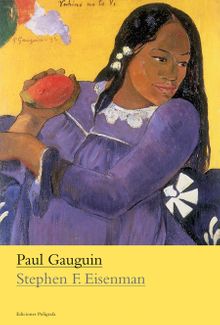 Paul Gauguin
Paul Gauguin
Published by Ediciones Polígrafa.
Text by Stephen F. Eisenman.
PUBLISHER
Ediciones Polígrafa
BOOK FORMAT
Hardcover, 8 x 11.25 in. / 96 pgs / 64 color.
PUBLISHING STATUS
Pub Date 3/31/2011
Out of print
DISTRIBUTION
D.A.P. Exclusive
Catalog: SPRING 2011 p. 68
PRODUCT DETAILS
ISBN 9788434312494 TRADE
List Price: $25.00 CAD $30.00
AVAILABILITY
Not available
STATUS: Out of print | 00/00/00 For assistance locating a copy, please see our list of recommended out of print specialists |
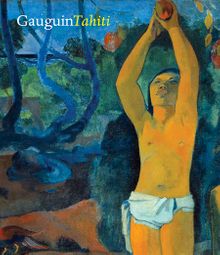 Gauguin Tahiti
Gauguin Tahiti
Published by MFA Publications, Museum of Fine Arts, Boston.
Text by George T.M. Shackelford, Claire Frèches-Thory, et al.
PUBLISHER
MFA Publications, Museum of Fine Arts, Boston
BOOK FORMAT
Paperback, 9.5 x 11 in. / 380 pgs / 260 color.
PUBLISHING STATUS
Pub Date 1/31/2011
Out of print
DISTRIBUTION
D.A.P. Exclusive
Catalog: SPRING 2011 p. 68
PRODUCT DETAILS
ISBN 9780878466672 TRADE
List Price: $40.00 CAD $50.00
AVAILABILITY
Not available
STATUS: Out of print | 00/00/00 For assistance locating a copy, please see our list of recommended out of print specialists |
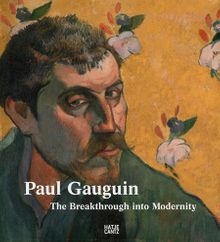 Paul Gauguin: The Breakthrough Into Modernity
Paul Gauguin: The Breakthrough Into Modernity
Published by Hatje Cantz.
Text by Agnieszka Juszczak, Heather Lemonedes, Belinda Thomson.
PUBLISHER
Hatje Cantz
BOOK FORMAT
Hardcover, 10 x 11 in. / 248 pgs / 234 color / 20 bw.
PUBLISHING STATUS
Pub Date 11/30/2009
Out of print
DISTRIBUTION
D.A.P. Exclusive
Catalog: FALL 2009 p. 68
PRODUCT DETAILS
ISBN 9783775724272 TRADE
List Price: $60.00 CAD $70.00
AVAILABILITY
Not available
STATUS: Out of print | 00/00/00 For assistance locating a copy, please see our list of recommended out of print specialists |
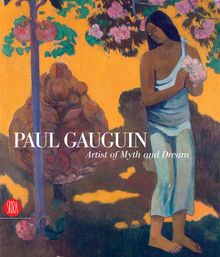 Gauguin
Gauguin
Artist of Myth and Dream
Published by Skira.
By Stephen F. Eisenman.
This catalog offers a retrospective of Gauguin’s entire artistic career, beginning with his early impressionist works through to his final masterpieces painted on the Marquesas Islands, where Gauguin was inspired to create artworks that are among the most vivid in the history of painting. “Gauguin had clearly decided to violate social norms, destroy consecrated artistic standards and create a scandal wherever he went, and he was successful. He wanted to be a dissenter, a rebel, an outsider and a renegade, but through art he also wanted to rebuild the fantastic images of a Golden Age that had dominated his mind from his first travels around the world.” (From the introductory essay by Eisenman.) This book features a magnificent sampling of the artist’s paintings and an absorbing introduction by Stephen F. Eisenman, a noted scholar on artistic movements of the twentieth century.
Stephen F. Eisenman teaches history of art at the Northwestern University in Evanston, Illinois. He has published several critical studies on modern art and specializes particularly in artistic movements that developed at the end of the twentieth century.
PUBLISHER
Skira
BOOK FORMAT
Hardcover, 10 x 11.75 in. / 440 pgs / 210 illustrations.
PUBLISHING STATUS
Pub Date 9/23/2008
Out of print
DISTRIBUTION
D.A.P. Exclusive
Catalog: Publisher Backlist
PRODUCT DETAILS
ISBN 9788861304581 TRADE
List Price: $80.00 CAD $100.00
AVAILABILITY
Not available
STATUS: Out of print | 00/00/00 For assistance locating a copy, please see our list of recommended out of print specialists |
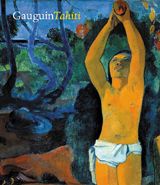 Gauguin Tahiti
Gauguin Tahiti
Published by MFA Publications, Museum of Fine Arts, Boston.
Essays by George T.M. Shackelford, Claire FrÀches-Thory, et al.
PUBLISHER
MFA Publications, Museum of Fine Arts, Boston
BOOK FORMAT
Clothbound, 9.5 x 11 in. / 372 pgs / 260 color / 80 bw.
PUBLISHING STATUS
Pub Date 2/2/2004
Out of print
DISTRIBUTION
D.A.P. Exclusive
Catalog: SPRING 2004 p. 43
PRODUCT DETAILS
ISBN 9780878466665 TRADE
List Price: $65.00 CAD $87.00 GBP £57.00
AVAILABILITY
Not available
STATUS: Out of print | 00/00/00 For assistance locating a copy, please see our list of recommended out of print specialists |
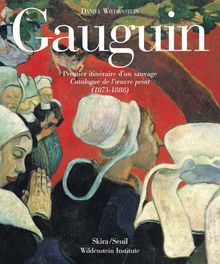 Gauguin: A Savage in the Making, Catalogue Raisonne of the Paintings (1873-1888)
Gauguin: A Savage in the Making, Catalogue Raisonne of the Paintings (1873-1888)
Published by Skira.
By Daniel Wildenstein.
A century after the death of Paul Gauguin, our knowledge of his life and work has made huge strides. The present work covers the youth and early maturity of this pioneering artist and attempts a summation. It also offers a complete catalogue of the paintings, in the process thoroughly updating the original Wildenstein catalogue of 1964. These first two volumes take the reader through to the end of 1888, a year of profound upheavel in French painting. That was the year in which Gauguin and his friends, by a collaborative effort, arrived at Synthetism and, by rejecting representation in depth, freed Western painting of laws that had governed it since the Renaissance.
Synthetism was also a form of primitivism. The society in which Gauguin lived was--already--a technical and materialist one, which contained the seeds of all that the 20th century became. Gauguin was one of the first to seek, in reaction to this civilization, a form of inspiration deriving from the timeless origins of humanity.
Although these two volumes are the product of rigorous research, they are studded with illustrations and are by no means intended for specialists alone. Commentary on each work offers a step-by-step analysis of Gauguin's artistic development, while reconstructing the artist's experience and the aesthetic and socio-cultural issues of his times.
The lively detail of the chronology describes the events of Gauguin's life, along with those of his friends; thanks to extensive research in unpublished archives, it also casts completely new light on Gauguin's ancestry. The introduction offers an analysis of the period and an in-depth portrait of this great artist. This exhaustive work is carefully designed so that each entry and insert can be read in isolation, though a system of cross-referencing ensures the continuity of the work and restores the overall trajectory of Gauguin's development.
PUBLISHER
Skira
BOOK FORMAT
Hardcover, 10 x 12.5 in. / 648 pgs / 800 illustrations.
PUBLISHING STATUS
Pub Date 6/1/2002
Out of stock indefinitely
DISTRIBUTION
D.A.P. Exclusive
Catalog: Publisher Backlist
PRODUCT DETAILS
ISBN 9788884911377 TRADE
List Price: $440.00 CAD $565.00
AVAILABILITY
Not available
STATUS: Out of stock indefinitely. |
Paul Gauguin: Tahiti
Published by Hatje Cantz.
By Paul Gauguin. Edited by Christophe Becker. Contributions by Christofer Conrad, Ingrid Hermann.
PUBLISHER
Hatje Cantz
BOOK FORMAT
Paperback, 6.75 x 9.5 in. / 96 pgs / 100 color.
PUBLISHING STATUS
Pub Date 7/2/1998
Out of print
DISTRIBUTION
D.A.P. Exclusive
Catalog: FALL 1998
PRODUCT DETAILS
ISBN 9783775707442 TRADE
List Price: $45.00 CAD $55.00
AVAILABILITY
Not available
STATUS: Out of print | 4/24/2004 For assistance locating a copy, please see our list of recommended out of print specialists |
